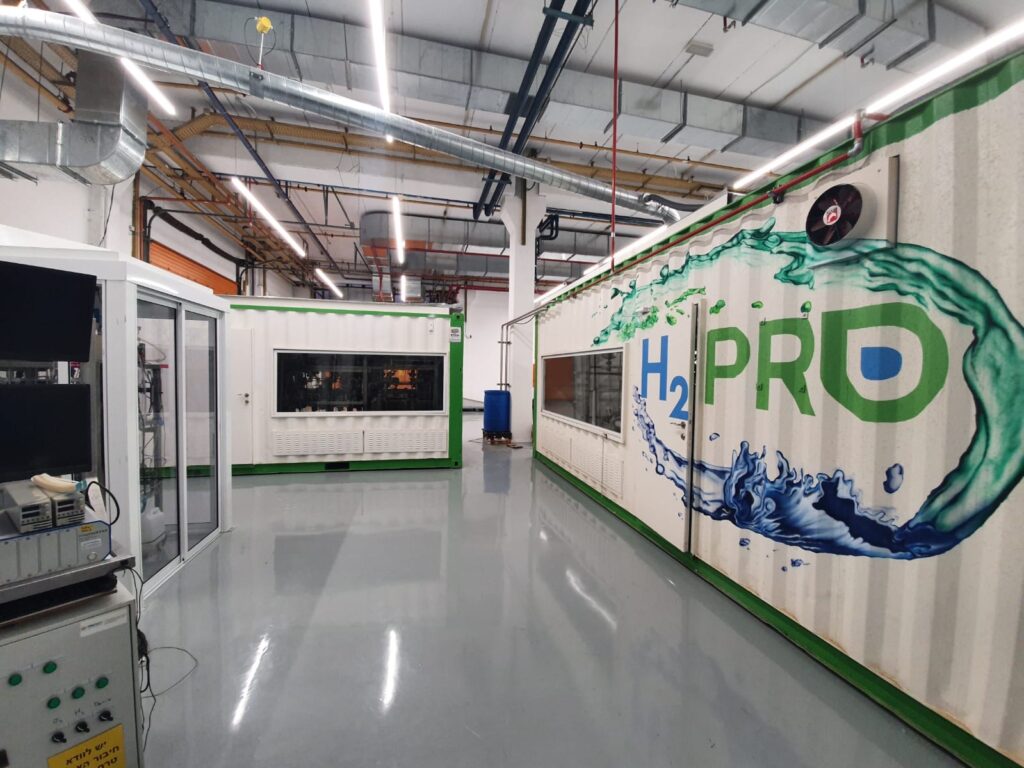In Short
- H2Pro has managed to optimize the process of splitting water into hydrogen and oxygen.
- It is now price-competitive with grey hydrogen, which is based on fossil fuels.
- The technology brings the price of green hydrogen from $6/kg down to $1/kg
- There used to be four main types of electrolyzers. H2Pro created a fifth type, which uses thermally activated chemicals.
- This is a breakthrough for the energy transition, since hydrogen is a key energy carrier for a decarbonized economy.

Hydrogen demand is increasing
As countries take the first steps in electrifying and decarbonizing their economies, the crucial role of hydrogen becomes more and more evident. H₂ serves as an additional energy source in industries where direct electrification is challenging. This includes steel production, chemicals, long-haul transport, shipping, and aviation.
Since the 1970s, global hydrogen demand has doubled from 30 million metric tons (MMT) to 70 MMT. BloombergNEF estimates that the hydrogen market could grow up to 700 MMT by 2050 in order to meet decarbonisation goals and supply 25% of the global energy needs. According to Bloomberg, “this would require over $11 trillion of investment in production, storage and transport infrastructure. Annual sales of hydrogen would be $700 billion, with billions more also spent on end-use equipment.”
An abundant source of energy
Hydrogen comes from abundant sources, doesn’t produce any CO2 emissions, and contains more energy per unit of weight than fossil fuels. This makes it a fantastic source of energy.

Today, green H₂ has high production costs at $6/kg. As a result, it only makes up a small percentage of the hydrogen market. It competes against grey hydrogen, which costs as little as $1/kg to produce. Getting green H₂ to $1/kg is the holy grail to unlock its huge market potential and become a true alternative to fossil fuels.
To get to price parity ($1/kg), we require cheap, renewable energy, as well as innovation in the performance of electrolyzers. They are the core enabler for green hydrogen production.
Electrolyzers as the key technology for hydrogen production
Today, there are four main types of electrolyzers:
Alkaline Electrolyte Membranes
Alkaline Electrolyte Membranes (AE) are the most basic and mature technology. They have about a 70% share of the currently green hydrogen market. The technology benefits from low cost (in comparison to the other established technology – PEM), and a long operational life. However, AE processes cannot operate at a low utilization level (think 10% on a cloudy day). Batteries could mitigate this effect, but would increase cost. AE systems are also not very efficient, with 65-70% system efficiency.
Polymer Electrolyte Membrane (PEM)
Polymer Electrolyte Membrane (PEM) has a market share of about 30%. It is being adopted by most of the leading electrolyzer manufacturers, such as ITM Power and Siemens Energy. PEM performs well on all metrics, except for capital cost. PEM electrolyzers require precious metals (iridium or platinum). However, they are expensive, since they operate in a very acidic environment. Therefore, it will be hard to get to $1/kg with PEM technology.
Anion Exchange Membrane (AEM)
Anion Exchange Membrane (AEM) combines both, good performance and the ability to deal with intermittency of a PEM. Plus, they have a lower capital cost of an alkaline electrolyzer. However, AEM unsolved problem: Durability and unstable lifetime profiles. These problems may cause the cost to be high and prevent getting to the price target.
Solid Oxide Electrolyzers (SOEC)
Solid Oxide Electrolyzers (SOEC) have better efficiency than the other methods, however their main issues have to do with short lifetime and inability to handle intermittent power. You pretty much turn it on when you buy and turn it off when you decommission. So it might be applicable to nuclear or hydro, but not so much to intermittent sources like solar or wind.
Among these four, no technology has yet emerged as the clear best alternative. However, there is a fifth way to solve this problem.
H2Pro’s innovative process

H2Pro is deploying a novel, low-cost green-hydrogen production technology. The company is using electrochemical, thermally activated chemical (E-TAC) to split water into hydrogen and oxygen. However, unlike conventional electrolysis, H₂ and oxygen are generated separately in different steps. An electrochemical (E) step and a thermally-activated chemical (TAC) step.
Expensive membrane eliminated
E-TAC’s membrane-free electrolytic reactors are suitable for high-pressure hydrogen production and cost-efficient scaling. This disruptive process enables the production of green hydrogen in a way that retains high energy efficiency (98.7% HHV) inside the reactors and a 95% system efficiency. H2Pro’s electrolyzer technology eliminates the need to use a membrane, the most expensive and sensitive element in the process. It thereby paves the way for simple-to-produce and cheap hydrogen.
H2Pro’s technology operates at a low temperature (25-110C) and can be operated intermittently (highly tolerant to power fluctuations). This makes it an ideal pair for inherently intermittent renewables such as wind and solar. Combining these benefits, the company can produce scalable units that require 25% less electricity. And they can ultimately be manufactured at less than half the cost of PEM electrolyzers. With electricity prices trending towards $0.02/kWh (already being seen in best-in-class renewable projects), H2Pro can achieve $1/kg H₂ production at scale.
Carbon Math / The Impact
H2Pro’s technology can dramatically reduce CO2 emissions of hydrogen production in comparison to incumbent hydrogen technology, called steam methane reforming (SMR). SMR accounts for 99% of hydrogen production today. It produces ~9-10 tons CO2 per ton of H₂. In contrast, H2Pro’s technology does not produce any emissions, presuming that electricity comes entirely from renewables.
The global demand for hydrogen could grow from around 70 MMT of hydrogen annually in 2021 to more than 700 MMT by 2050, with almost all of it being green hydrogen.
Given the quantity of hydrogen produced today, large-scale adoption of H2Pro’s technology would reduce global greenhouse gas emissions by 630 Mt CO2/yr, or ~1.2 % of global GHG emissions – for existing markets only. The impact can be even bigger as the hydrogen market grows, and H2Pro’s technology can be the one to accelerate that growth.
Next Steps
H2Pro has successfully tested its technology in lab-scale demonstration systems. The team is raising funds to develop and deploy its first commercial prototypes. We are excited to partner with H2Pro and invest together with Temasek, Horizon Ventures, ArcelorMittal, Yara, and Breakthrough Energy Ventures in their Series B round.
H2Pro serves as a great example of the type of company needed to reach net-zero: a combination of top-in-class scientists and great business entrepreneurs.



